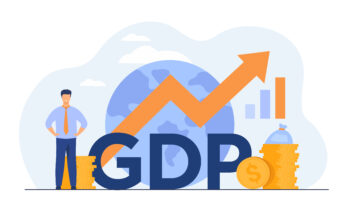Introduction
Let us be honest: keeping up with the explosion of AI tools these days can feel like a full-time job. Everywhere you look—whether you are at work, in school, or just browsing online—someone is talking about how artificial intelligence is changing the game. I have seen it myself: from whipping up quick reports to brainstorming ideas, AI is everywhere. But with so many choices in 2025, how do you even start figuring out which tool is right for you?
If you are a decision-maker (or just the “techie” in your group of friends), you have probably wondered: “Is there a simple way to cut through the hype and pick the best AI tool for what I need?” That is exactly what I will help you do here.
Understanding the AI Tool Ecosystem
AI tools come in many shapes and sizes, each tailored for specific tasks:
- Writing & Content Creation: ChatGPT, Jasper, Sudowrite
- Research & Academic Support: Paperpal, Blainy
- Business & Professional Writing: Type.ai, Gemini
- Creative & Fiction Writing: Sudowrite, ChatGPT
- Specialized Tools: Clearscope (SEO), Penfriend (copywriting)
Each tool leverages advanced language models, but their features, integrations, and user experiences differ significantly.
Evaluation Criteria for Decision-Makers
Before choosing an AI tool, consider these key factors:
- Core Features & Capabilities: Does the tool support your primary tasks (e.g., long-form writing, summarization, SEO)?
- Customization & Flexibility: Can it adapt to your brand voice or workflow?
- Integration: Does it connect with your existing software (Google Workspace, Slack, CMS, etc.)?
- User Experience: Is it intuitive for your team? How steep is the learning curve?
- Collaboration: Can multiple users work together seamlessly?
- Data Security & Compliance: Does it meet your organization’s privacy standards?
- Pricing & Scalability: Is it affordable as your needs grow?
AI Tools Compared: At a Glance
| Tool | Best For | Key Features | Pricing Starts At |
|---|---|---|---|
| ChatGPT | Creative Narratives | Versatility, prompt-based | $20/month |
| Jasper | Marketing, Teams | Templates, high-quality | $49/month |
| Gemini | Analytical Writing | Google integration | $19.99/month |
| Type.ai | Professional Writing | Contextual understanding | $23/month |
| Paperpal | Academic Writing | Citation, summarizer | $20/month |
| Sudowrite | Fiction Writing | Story tools, creativity | $19/month |
| Blainy | Research Papers | Academic tone, citations | $12/month |
Deep Dive: Top AI Tools by Use Case
Content Marketing & Copywriting
Jasper and ChatGPT excel at generating persuasive copy, blog posts, and social media content. Jasper stands out for its marketing templates and brand voice features, making it a favorite among agencies and teams.
Academic & Research Writing
Paperpal and Blainy are tailored for students and researchers. They offer citation management, summarization, and academic tone correction, streamlining the process of writing research papers and theses.
Professional & Business Writing
Type.ai and Gemini are designed for business professionals. Type.ai offers contextual understanding for reports and proposals, while Gemini’s deep integration with Google Workspace gives it an edge for collaborative business writing.
Fiction & Creative Writing
Sudowrite and ChatGPT inspire creativity with tools for character development, plot suggestions, and stylistic refinement, making them ideal for novelists and storytellers.
Specialized Needs
Clearscope is a leader in SEO optimization, while Penfriend offers advanced copywriting support for ad campaigns and product descriptions.
Feature Spotlight
- Templates & Workflow Automation: Jasper and Type.ai offer robust templates for repeatable tasks.
- Collaboration: Jasper and Gemini support team-based editing, comments, and version control.
- Multilingual Support: ChatGPT, Gemini, and Jasper offer content generation in multiple languages.
- Integrations: Gemini works seamlessly with Google tools; Jasper and ChatGPT integrate with Zapier, Slack, and more.
- Mobile & Offline Access: Most leading tools offer web and mobile apps; check for offline capabilities if needed.
Pros and Cons: What to Watch For
| Tool | Pros | Cons |
|---|---|---|
| ChatGPT | Versatile, affordable, broad knowledge base | May lack advanced marketing features |
| Jasper | Marketing-focused, brand voice, collaboration | Higher cost, learning curve |
| Gemini | Google integration, business focus | Limited to Google ecosystem |
| Type.ai | Contextual, professional tone | Fewer creative features |
| Paperpal | Academic tools, citation support | Less suited for general content |
| Sudowrite | Creativity tools, fiction focus | Not ideal for business writing |
| Blainy | Academic tone, affordable | Limited outside research papers |
Decision Framework: How to Choose the Right AI Tool
- Define Your Main Use Case:
Are you focused on marketing, academic writing, business reports, or creative projects? - Prioritize Must-Have Features:
List features like SEO, collaboration, templates, or multilingual support. - Assess Integration Needs:
Which tools must the AI connect with (Google, Slack, CMS, etc.)? - Consider Budget & Scalability:
Choose a tool that fits your current budget and can grow with your team. - Test Drive:
Use free trials or demos to evaluate usability and output quality. - Review Security & Compliance:
Ensure the tool meets your organization’s privacy and compliance requirements.
Conclusion
There is no one-size-fits-all answer to “Which AI tool is the best?” The ideal choice depends on your unique goals, workflows, and budget.
- For marketing teams, Jasper is a top contender.
- For academic writing, Paperpal or Blainy shine.
- For creative projects, Sudowrite and ChatGPT lead the way.
- For business writing and integration, Gemini and Type.ai are strong choices.
Evaluate your needs, test the options, and choose the tool that empowers your team to achieve more with AI.
FAQs
Q: Can I use more than one AI tool?
A: Absolutely! Many organizations use a combination of tools for different tasks.
Q: Are AI writing tools secure?
A: Most reputable tools offer robust security, but always review their privacy policies and compliance certifications.
Q: How much human editing is needed?
A: AI-generated content often benefits from human review for accuracy, tone, and compliance.



